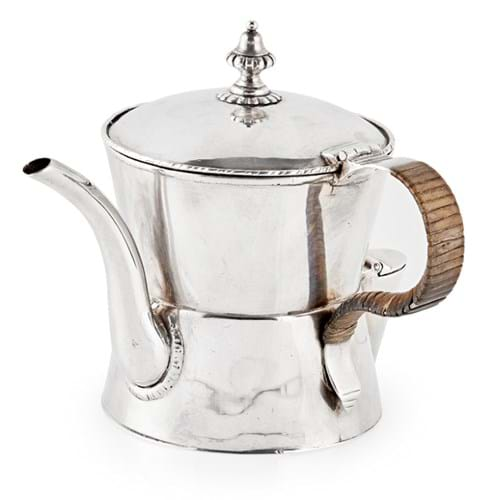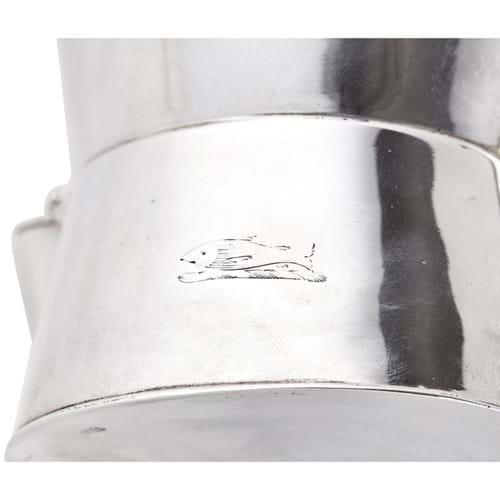
This example, made by Edinburgh silversmith Daniel Ker in 1765, is estimated at £3000-5000 at the auction on August 15.
What is an argyll?
Argylls are silver or plated vessels made in different styles and shapes that were used for keeping gravy warm.
In large houses when gravy was carried from the kitchen (usually on the lower levels of the house) to the dining room, it would sometime arrive cold especially on winter evenings.
An argyll usually has a double-wall construction with a second internal compartment that could be filled with hot water or, in some cases, house a hot metal bar to emanate heat.
Josiah Wedgwood produced similar ceramic ‘gravy cups’ from around 1774 onwards.
This example at Lyon & Turnbull keeps the gravy warm by inserting hot water into the exterior funnel which extends into the false bottom.
When were they made?
The earliest surviving example of an argyll dates from 1755. Silver argylls tended to be produced by silversmiths until around 1800.
How did they get their name?
The argyll takes its name from the Dukes of Argyll who are sometimes credited with inventing the vessel type. John Campbell, the fifth Duke of Argyll (1723-1806) and his wife Elizabeth Gunning resided in a chilly Scottish castle and apparently disliked the gravy arriving cold at the table.
Are Scottish argylls particularly rare?
Yes. It is unclear why Scottish silver argylls are much rarer than those made in England, especially given the origin of their name and the need for such items being just as great north of the boarder.
It might be this Scottish ‘invention’ was quickly taken south (the earliest surviving example was made in London) and argylls became more commonly seen gracing dining rooms in England than they ever did in Scotland.
In fact, the argyll at Lyon & Turnbull is only the second known Scottish example – the other one made by Patrick Robertson of Edinburgh and dated 1776 is now in the National Museum of Scotland.
What’s the provenance?
The argyll at Lyon & Turnbull has an engraved crest of a salmon naiant (ie swimming horizontally) which believed to be that of the M’Lean family. The family was one-time resident at Dundee and the crest could well be derived from possibly related branches of M’Leans on Scotland’s western coast.
In the 20th century, it was owned by John Noble (1936-2002), the oyster grower and the founder of the Loch Fyne restaurant chain who was also the laird of Ardkinglas. It last appeared on the market at Bonhams in December 2012 when it sold for £2000.
View the catalogue entry for this silver argyll on thesaleroom.com






